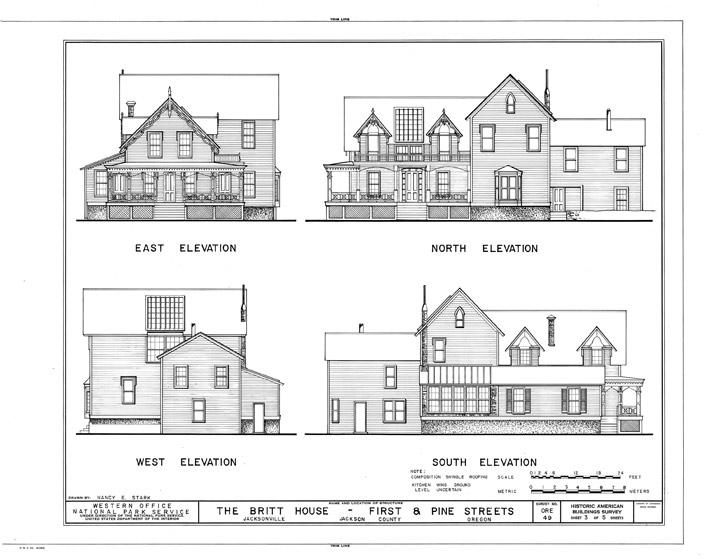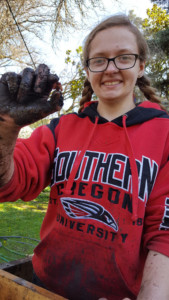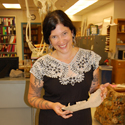Digging Jacksonville – November 2018
Every year, hundreds of art and music aficionados flock to Jacksonville to attend the Britt Music and Arts Festival. Surely, each visitor is impressed not only by the excellent performances, but also by the loveliness of the Britt Gardens themselves. But did you know that the gardens that now play host to the festival was once the Britt family’s backyard?
In 1852, Peter Britt built a bachelor’s cabin on South First Street, which he expanded to be suitable for a young family when his wife, Amalia, and her son from her first marriage, Jacob, joined him in Oregon in the 1860s. Peter and Amalia also raised their children Emil and Mollie in the house. The two younger siblings lived in the house all their lives. The Britts expanded the house again in the 1880s by adding a photography studio/wing which featured modern skylights. The additions and changes to the Britt home mirrored the growth of the Britt family. As the Britt family grew in both wealth and number, they changed their home to suit their needs and station. Thus, the Britt home evolved from a pioneer cabin to a fine American Country Gothic house. By the time the Britts had finished remodeling and adding to their home, it resembled a rather stately gingerbread house.
Though the house itself was sadly destroyed by fire in 1960 before its fate could be decided, it can still be used as an artifact through which we can appreciate the history of the family and Jacksonville as it changed from a frontier town to an early modern community. While the house itself cannot be re-built, it can be resurrected through digital media. Digital interpretations can tell the stories of lost structures to locals, tourists, and stakeholders located anywhere internet access is available. The method can also be applied to still-standing structures to allow history buffs to explore regional history from afar.
By using archaeological data gathered by the Southern Oregon University Laboratory of Anthropology (SOULA), the Library of Congress’ Historic American Building Survey (1933), and Peter Britt’s own photographs, I was able to digitally reconstruct the “bones” of the Peter Britt House. I did this using the SketchUp software, which is a 3D modelling program intended for architects but for which historians of historic structures have found creative uses. SOULA is currently working on securing an open access digital platform so that the digital model will be available, and locals and visitors alike will be able to virtually walk through the ghost of the Britt family home.
Emily Paige Taylor graduated summa cum laude from SOU with a BA in History and a minor in Anthropology in June. This fall she is starting a joint PhD program in US and Public History at Loyola University in Chicago, IL and will miss her home in the beautiful, mythical State of Jefferson terribly. You can reach SOULA by contacting Chelsea Rose at rosec@sou.edu and follow SOULA on facebook/Southern Oregon University Laboratory of Anthropology.



 Chelsea Rose is an historical archaeologist who specializes in the settlement and development of the American West. Chelsea and the Southern Oregon University Laboratory of Anthropology (SOULA) conduct archaeology across Oregon and have done several projects in Jacksonville. You can reach Chelsea at rosec@sou.edu and follow SOULA on
Chelsea Rose is an historical archaeologist who specializes in the settlement and development of the American West. Chelsea and the Southern Oregon University Laboratory of Anthropology (SOULA) conduct archaeology across Oregon and have done several projects in Jacksonville. You can reach Chelsea at rosec@sou.edu and follow SOULA on